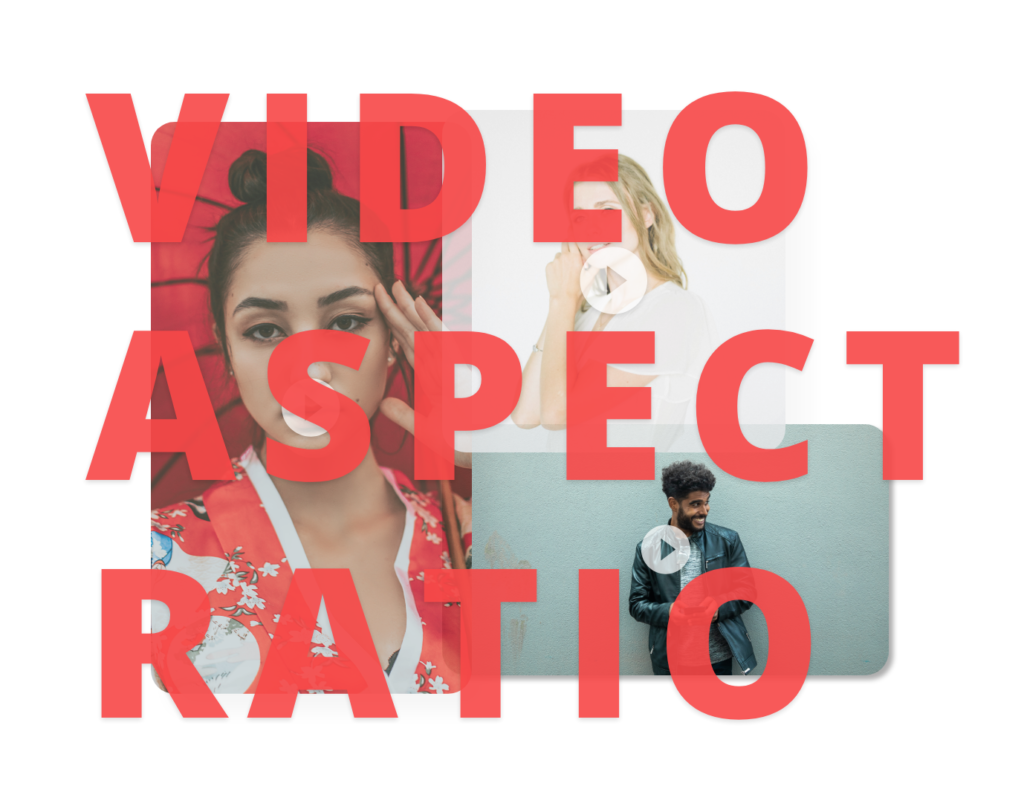It is very common to confuse the video aspect ratio with other characteristics such as resolution. Today, we are going to clear this up, define, what it is for, why it is so important, and how to adapt our videos to serve us in various aspect ratios. Let’s see, also, the most used ratios within the environment of social networks.

The video aspect ratio
Let’s get straight to the point: the video aspect ratio is the numerical ratio between the number of pixels’ width and the video frames’ height. It is usually expressed using two values (width and height, in that order) separated by a colon (16:9, 1:1, etc.). For example, 1:1 tells us that the video we will see will be square, with its width and height being equal, regardless of its actual pixel dimension. Remember that this is just a way to see the proportions of our media. It does, however, not refer to actual dimensions at all.
What are the most common video aspect ratio in Social Media?
Today’s most used dimensions are the 16:9, 9:16 and 1:1, although you can also find the 4:5 on Instagram and the 1:3 and 3:1 on Twitter, for example.
Sometimes we find this comparison ratio concerning the number 1, for example, 1.78:1. This mostly happens when we talk about ratios that are uncommon or totally new.
The curious thing about this last one (1.78:1) is that it is the exact same as 16:9, only the way of writing it changes. But don’t worry, in 99.99% of the cases we refer to it in its most commercial form (16:9).
Another aspect ratio used until not long ago is 4:3, especially in non-HD video resolutions. But it has fallen into disuse with the new imaging paradigms.
How to choose the right video aspect ratio?

This is very important, especially so that it does not lose information or deform when it comes to publishing our video. The answer is “it depends” or rather “it depends on these 4 questions”:
- Where am I going to publish my video?
- What aspect ratio do these platforms use?
- Do I need multiple versions of your video with different aspect ratios?
- If so, can a single video be adapted for multiple aspect ratios?
By answering these questions you can define which ones work best for your project. Seeing how other companies do it can be very helpful. It will give you an idea of which way to go.
Thinking of a video for various aspect ratios
You can create a video designed to have several aspect ratios. The trick is to define which elements of the scene you compose cannot be omitted and which ones can. The idea is to cut the video always keeping the necessary information (text, subject, or center of the action) within the area you cut. You should do this intelligently, without forcing the video. Always remember that, if necessary, it may be worthwhile to have two versions of the video intended to be used with various aspect ratios, than to force a single one for all of them.
Conclusion
Aspect ratio is the ratio between the number of pixels width and height of the video frames. It is usually defined using a number, a colon and another number such as 16:9 and 1:1. Although others may be common depending on the environment in which we move (Twitter, Instagram, etc.), these are the most frequent ones.
You can use the same video to create media with different aspect ratios by cropping it. Still, you have to preserve the essential information. We recommend you analyze how variable the media you need, according to the aspect ratio. This way, you can decide how to compose your videos and find it easy to cut them or make two versions of each one that best suits your needs.
We hope this article has been helpful — or at least entertaining! Remember that you don’t have to have an expert to create a great video. Check out WOXO’s Video Maker to get started for free!
Any information we’ve missed? Tell us on Instagram @woxotech